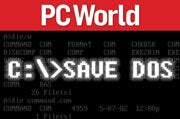Pasti pada BT kan kalo pas lagi download movie di LimeWire, udah lama ngedownloadnya, eh ternyata yang didapet bukan movie yang dimau, malah bokep jadul ato virus ato trojan.
Buat pake LimeWire, and kalo mo ngedownload file2 movie yg bener, minimal harus tau nama2 server yang ada, and juga beberapa nama yang sering dipake.
Misalkan kita mo download : Incredible Hulk 2, pasti hampir semua orang maen tulis nama film nya, dan pas liat ada yg muncul dengan nama itu, langsung maen download aja, and udah sekian lama nunggu, pas di cek, ternyata tuh file movie nya bukan Incredible Hulk 2, melaenkan virus/trojan/junk files.
di LimeWire, disediakan fasilitas untuk ngecek apa file movie yang mo kita download itu bener2 movie itu ato gak, dan juga kualitas nya DVD ato kualitas cam biasa. Nama nya
BitCollider.download file dibawah ini dan install di komputer untuk mengetahui dan mengecek benar tidak nya file tersebut dan kualitas apa dari file tersebut :
Buat Windows 95/98/2000/XP/Vistahttp://prdownloads.sourceforge.net/b...etup-0.6.0.exeBuat Linux/Intel X86http://prdownloads.sourceforge.net/b...0.6.0?downloadsetelah itu di install, dibawah ini adalah beberapa nama2 server yang ane ketahui, dan ane udah biasa download semua movie2 yang ada di bioskop (yg udah maen atopun yang coming soon) dan semua file yang ane download bener.
caranya, tinggal masuk ke limewire sperti biasa, abis itu di search di bagian video, ketik aja nama2 server dibawah ini.
abis semua nama2 file movie nya muncul, kalo mo ngecek bener ato enggak nya, tinggal di klik kanan file tersebut, dan pilih
advanced --- lookup with bitzi, and bakalan masuk ke browser and ditunjukkin apa tuh file, file beneran yang dimau, ato trojan/virus/junk file.
Server Russia :1. Pukka Server ini tampilan film nya pake tulisan Russia, tapi semua kalimat ato
pembicaraan di film tetep pake bahasa Inggris.
ada beberapa file movie yang disingkat di server ini, contoh :
Incredible Hulk 2.avi ----------> i.h.2.pukka.xvid.avi
Server Amerika :1. ShareheavenDi server ini kebanyakan film2 yang udah diputer/yg udah lama dengan
kualitas yg bagus.
2. Mavendi server ini kebanyakan film2 lama ato yang sudah diputar di cinema.
3. AxxoServer ini banyak juga film2 baru ato coming soon nya. Dan ini server
terbaik yang masih ada dan banyak yang memberikan komentar positif
banyak dari server ini.
4. Eng-Fxm5. Nedivx6. TelesyncServer China 1. KingbenBanyak sekali film2 baru dan coming soon di server ini, tapi kualitas nya
kebanyakan standard alias rekaman cam biasa, jadi kadang2 ada orang
jalan nya, dll, tapi ada juga yang kualitas DVD. Dan beberapa film yang
ada, kadang2 dengan beberapa subtitle mandarin ato yg laen.
2. Axi0nDi server ini banyak film2 coming soon nya, dan selama ane pake, ini
server lumayan bagus, and kualitas film nya DVD semua.
Server Europe1. BVQServer ini banyak film2 baru dan coming soon nya, dengan kualitas yang
OK punya. dan ini server di Inggris.
2. XanaxIni server Perancis, jadi kalo download di server ini rada ati2, soal nya
semua bahasa nya didubbing ke bahasa perancis.
Ada beberapa pemakaian kata yang bisa kita masukkan di Search yaitu :
1. 2008, 2007berdasarkan tahun film itu ditayangkan
2. Xvid / Divxartinya kualitas film yang dicari sudah menggunakan Divx dan banyak
varian nya pada saat memasukkan symbol ini, sperti :
xvid-camera, xvid-ltt, xvid-mvs
3. Dvdripartinya semua file movie yang dicari dengan kualitas DVD. Biasanya di
ripped dari DVD.
4. Dvdscr idem no. 3
5. Screener / Prevailbiasanya semua file movie yang direkam berasal dari movie yg coming
soon di waktu tersebut, jadi pada saat diputar movie tersebut, dalam
menit-menit tertentu, akan berubah jadi hitam putih movie tersebut,
setelah itu akan kembali ke normal kembali.
buat yang pengen ngedownload bokep2, terutama bokep2 jepang, ketik ini di Search :
1. 99bbfilm2 nya ukuran nya variasi, dari 100mb sampe 700mb an. kualitas ada
yg DVD tapi banyak yg kualitas cam biasa.
2. moodyzkebanyakan ukurannya diatas 600mb, dan hampir semuanya dengan
kualitas DVD.
3. tora-torasemua kualitas film nya kualitas DVD. dan untuk ngecek nya, bisa di
cek di google,contoh: Tora-tora Platinum vol. 24, cari aja di google.
apa yang ditampilkan di google, sama dengan yang akan didownload.
hampir semua file ukurannya diatas 700mb.
4. kokeshisemua kualitas film nya kualitas DVD, tapi ukuran file nya banyak yang
diatas 1gb.






































